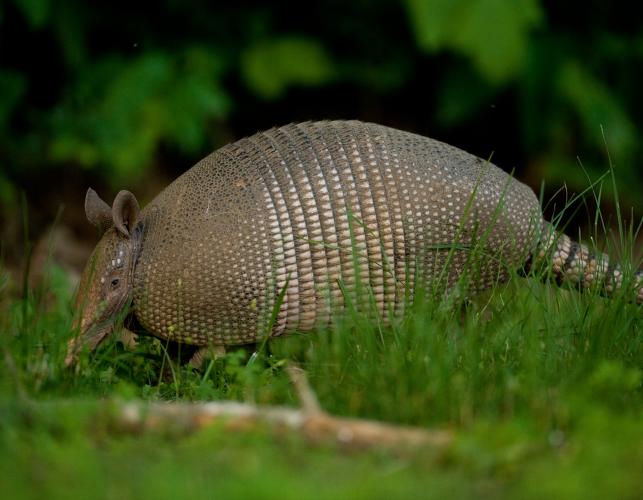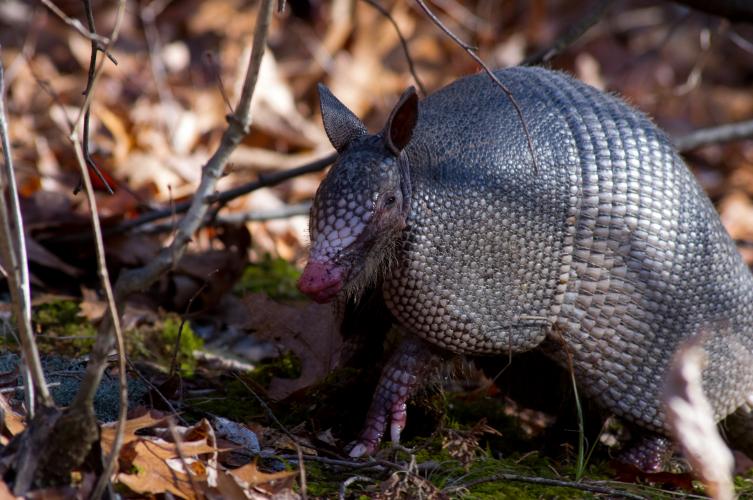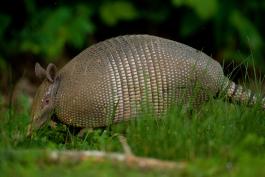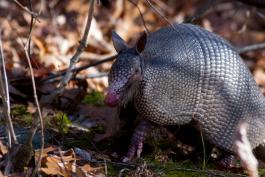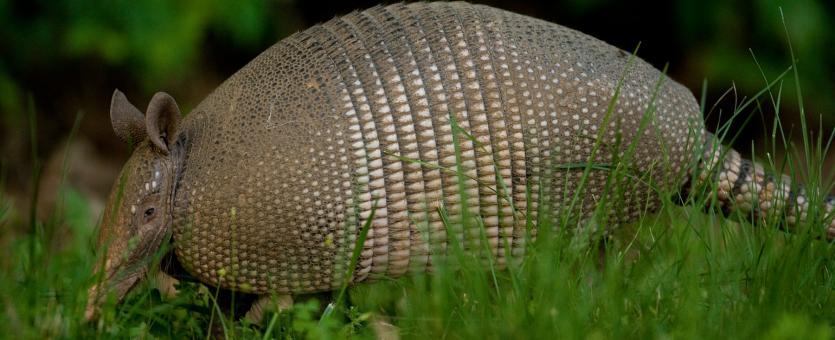
This unusual looking animal cannot be confused with any other mammal in Missouri. It does not have furry skin like other Missouri mammals; instead, it has hair only between hardened plates of skin and on the soft skin on the underside of the body. There are two large plates with a series of nine smaller moveable “girdles” or “bands” around the midsection. The head, short legs, and tail are covered with plates. The toes have well-developed claws. The overall color is mottled dark brown to yellowish white.
Total length: 23–31 inches; tail length: 9½–14½ inches; usual weight: 11¾–14 pounds.
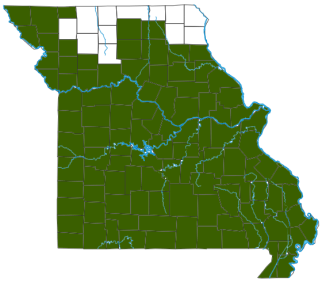
Primarily in the southern half of the state, but they occur as far north as the Missouri-Iowa state line. The armadillo’s northward range is limited by cold weather.
Habitat and Conservation
A variety of terrestrial habitats are used, but they seem to prefer oak-hickory or shortleaf pine forests. Because they dig burrows in the ground, they select wooded bottomlands, brushy areas, and fields with ground cover and loose soil. Their sight and hearing are poor, and they have the unusual habit of jumping upright when frightened, which explains why so many are hit by automobiles. They can run fast when pursued, and though their shell protects them somewhat, they cannot curl into a ball.
The northward expansion of armadillos is thought to be limited by extreme cold. They do not hibernate, and they are not adapted for finding food when snow and ice prevent access to the insects and other invertebrates they eat.
Food
Armadillos eat foods of animal origin — mostly insects and other invertebrates. Ants, adult and larval beetles, and flies are the main items, but earthworms and an occasional reptile round out the diet. Fungi and fruit are occasionally taken. Food is located by the nose, which is held close to the ground. The sharp claws then dig to expose the food, which is flicked into the mouth with the long sticky tongue.
Status
Common. The population density in Missouri is higher south of the Missouri River, with gradually fewer numbers farther northward in Missouri.
Life Cycle
Breeding occurs in the summer followed by a delay of 2–3 months during which the embryo divides into four cells before each one becomes implanted in the uterus. This results in four young that are identical, including sex (they are identical quadruplets). After 4 months’ implantation, the young are born. Newborn young have no shell, but their eyes are open and they can move about. They are weaned when 3 months old and become mature at 12–15 months of age. In summer they are mostly nocturnal.
Human Connections
Armadillos destroy harmful insects, but their digging can be a nuisance around gardens and homes.
Armadillos can carry the slow-moving leprosy bacterium, but there have been no armadillo-transmitted leprosy cases in Missouri. Wear gloves if you must handle armadillos, alive or dead. If you eat armadillo meat, thoroughly cook it first. Armadillos are used in biomedical leprosy research.
Ecosystem Connections
Armadillos are important predators of insects, and despite the toughness of their shells, many doubtless become food for carnivores, including scavengers. Armadillos are also important makers of dens, which are used by many other animals.
Signs and Tracks
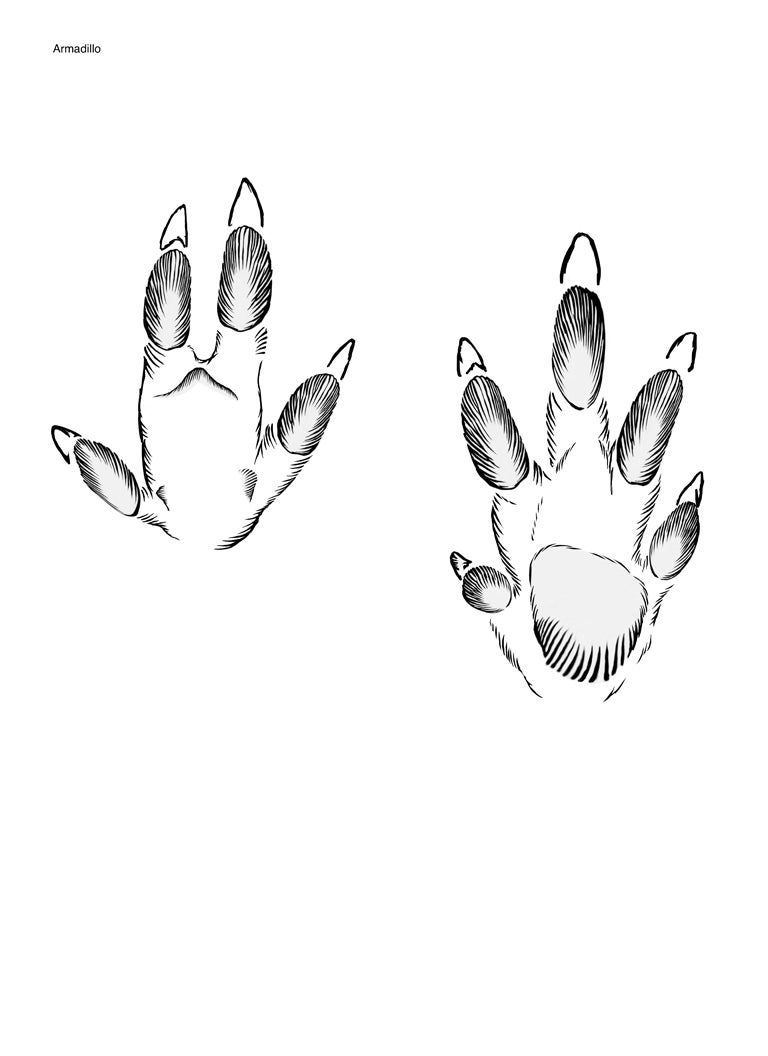
Front track:
- 1¾ inches long
- 4 toes
- middle 2 toes are close together, outer 2 are short, spreading outward
- outer 2 toes often do not leave a track.
Hind track:
- 2¼ inches long
- 5 toes
- outer 2 toes short, middle 3 longer
- outer 2 toes often do not leave a track.
Other notes:
- Toe prints and heel pad prints are often not separated.
- The body shell often drags, obliterating some prints.
- Incomplete prints can resemble hoof prints.
- Look for signs of their digging and rooting for insects.
- Armadillos create a linear path, leaving behind little holes where they have foraged for insects.
- Droppings are round like marbles and are composed of clay (armadillos ingest a great deal of soil as they eat soil-dwelling insects).
- Armadillos are increasing their range northward and will potentially be found statewide.
